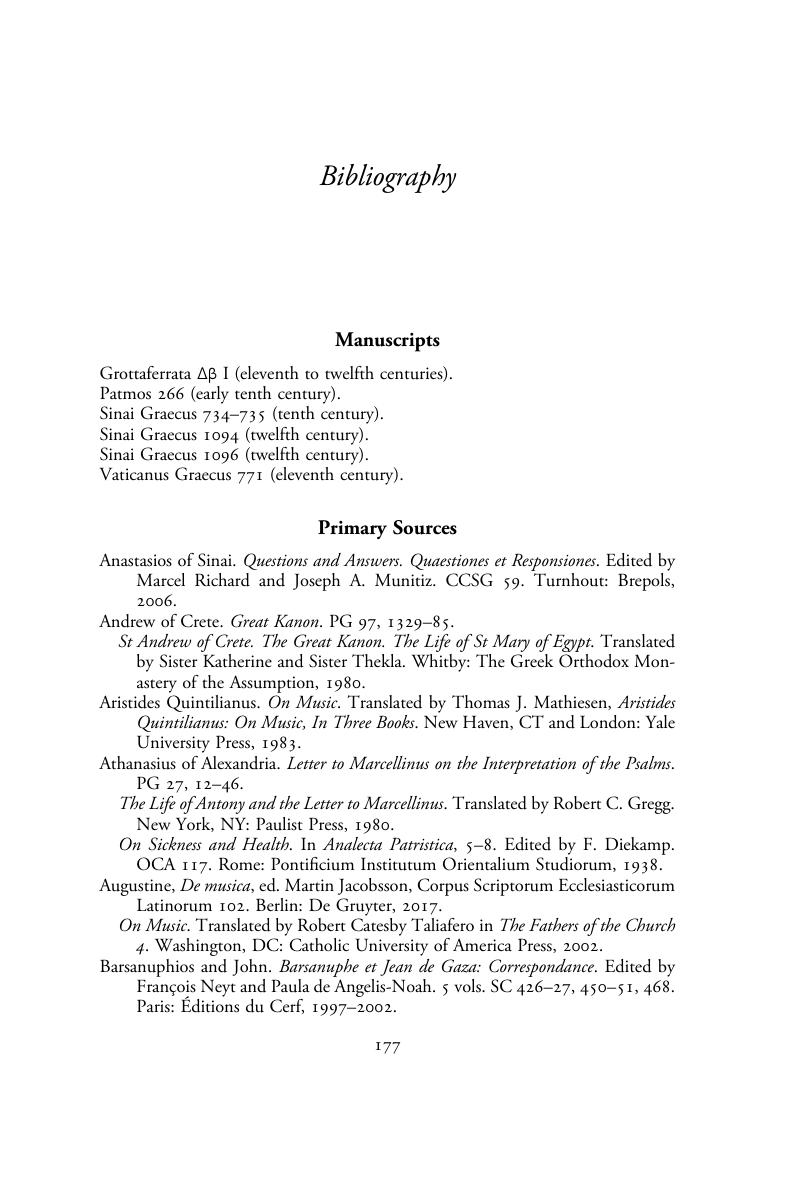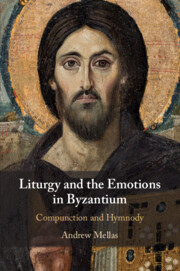Book contents
- Liturgy and the Emotions in Byzantium
- Liturgy and the Emotions in Byzantium
- Copyright page
- Dedication
- Contents
- Figures
- Acknowledgements
- Abbreviations
- Chapter 1 Introduction
- Chapter 2 The Liturgical World of Compunction
- Chapter 3 Romanos the Melodist
- Chapter 4 Andrew of Crete
- Chapter 5 Kassia
- Conclusion
- Glossary
- Bibliography
- Index
- References
Bibliography
Published online by Cambridge University Press: 04 July 2020
- Liturgy and the Emotions in Byzantium
- Liturgy and the Emotions in Byzantium
- Copyright page
- Dedication
- Contents
- Figures
- Acknowledgements
- Abbreviations
- Chapter 1 Introduction
- Chapter 2 The Liturgical World of Compunction
- Chapter 3 Romanos the Melodist
- Chapter 4 Andrew of Crete
- Chapter 5 Kassia
- Conclusion
- Glossary
- Bibliography
- Index
- References
Summary

- Type
- Chapter
- Information
- Liturgy and the Emotions in ByzantiumCompunction and Hymnody, pp. 177 - 202Publisher: Cambridge University PressPrint publication year: 2020



